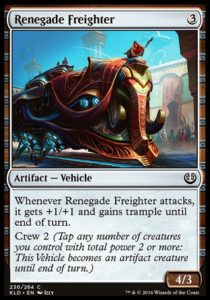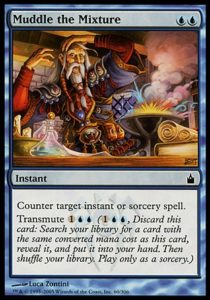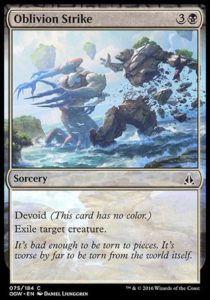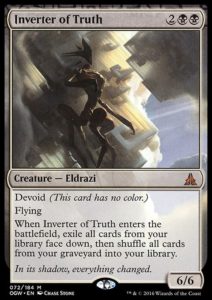Imagine it’s February, 2015. Wizards announces that small sets are phasing out. This is amazing news! Every Limited format will be triple large set! Almost every format I’d heavily played was best drafted by itself: Khans of Tarkir, Innistrad, Gatecrash, Theros, Lorwyn—they all got worse when small sets muddled the mixture. Sure, Scars of Mirrodin was improved by its small sets, and Ravnica: City of Guilds was wonderful as a full block format, but those were the exceptions to the rule.
Today, the opposite holds true. Since the two block paradigm began in 2015, I have consistently and substantially preferred small set Limited formats. Kaladesh, Amonkhet, and Ixalan were a disappointing decrescendo leading me to stop drafting (well, except for Unstable and Cube) for the two months prior to Rivals’ release. This was my first time going more than a few weeks without drafting (the main format) in over seven years.
As Rivals of Ixalan continues the trend of smaller sets dramatically improving Limited, and Dominaria looms large in April (and with it, the end of small sets); I worry about the future. If Magic persists in having mediocre large sets, Limited is going to be unsatisfactory for the foreseeable future.
Why have small sets become so essential to Limited? What will it take to buck this trend?
Aggression & Synergy
Many recent sets were dominated by powerful, aggressive common creatures. Thriving Rhino, Renegade Freighter, Gust Walker, and Territorial Hammerskull were among the best commons in their respective sets, if not the best. They were difficult to block, difficult to remove profitably, and very, very good at killing players. Even less impressive creatures, such as Tilonalli’s Knight, Slither Blade, and Thriving Grubs were either above the curve, unusually playable, or could take over the game.
In addition, combat tricks and auras have become increasingly powerful. Cartouche of Solidarity and One With the Wind are incredibly powerful tools for aggro. Even the “mediocre” spells like Built to Smash, Skullduggery, and Cartouche of Knowledge are both more powerful and more numerous than we’ve seen before.
In short, there has been a trend in all recent large sets towards stronger creatures, stronger buffs, and stronger combat tricks. All of these changes have made Limited fast and aggro-focused. They’ve made profitably blocking a rarity and have undermined new mechanics like Aftermath and Enrage by making creatures fast and big enough to ignore them. I’m happy with an aggressive format—hell, my favorite deck in Innistrad wasn’t Spider Spawning or Burning Vengeance, it was GW Travel Preparations—but when every format plays at the same breakneck speed and entire mechanics are invalidated, it all feels the same.
Even when the mechanics underlying the aggression are different, it doesn’t feel that different when someone is dying swiftly and helplessly to an energy-drunk Rhino, a flying sand-wizard, or a merfolk riding the wind wielding a Pirate’s Cutlass. You can’t do anything but race, and if you can’t win the race, you lose.
Watering it Down
Smaller sets tend to water down Limited formats. This is usually unavoidable: engine cards from the large set don’t reappear and every card appears less than in a triple set draft. Until Rivals of Ixalan, we’ve never seen two versions of the same card draftable in the same format. (Fallen Empires had multiple copies of common cards, but that set predated formal drafting.) All small sets have had to walk the tightrope of how much to change. Change too much and it muddles what the format is about. Change too little and there’s nothing to excite players. Change the power level too much and it minimizes the contributions of the weaker set while making it harder to get enough playables.
Normally, large set formats operated just fine on their own and small sets got in the way of that. However, with the shift towards a uniform speed of large-set Limited, small sets have made it harder to draft those cards and associated decks. They’ve consistently slowed formats down; though unlike the large sets, there’s quite a differential between the speeds of Aether Revolt, Hour of Devastation, and Rivals of Ixalan. Small sets have served to smooth out the very rough edges of larger sets, allowing more archetypes to flourish and more mechanics to be relevant. Because the formats were no longer defined by very specific, high power commons, the raw number of playables increased. And with that, so improved deck diversity. Where once small sets diluted large sets into worse or twisted versions of themselves, they’ve now diluted large sets into formats where the same strategy isn’t always the best one.
Removal
Yep, that thing I love to talk about. Removal is the lifeblood of Limited. Removal was weakened in Innistrad to make Morbid tense. It worked so well, that removal was steadily weakened at common for years. And it was good, until the power level of common creatures, auras, and combat tricks crept steadily up as common removal continued to get worse.
Let’s consider how far we’ve come since 2011. Remember how removal was weak in Innistrad and One With the Wind was perhaps the best common in Ixalan? Innistrad had Spectral Flight (which was fine, but not very good) and strong removal spells in every color: Bonds of Faith, Avacynian Priest, Victim of Night, Dead Weight, Silent Departure, Claustrophobia, Prey Upon, and Brimstone Volley. We now live in a world where Pious Interdiction, Unfriendly Fire, Final Reward, Malfunction, and Revoke Privileges are among the best kill spells available in large sets. The real MVPs are now cheap interactive spells like Magma Spray and Skullduggery. The reason aggro is so consistently dominant is that common creatures and tricks are perhaps better than they’ve ever been while common removal is at its worst.
The reason small sets have become so essential to Limited is that they’ve consistently increased the power level of removal spells while also diluting the concentration of dominant aggro cards. Unquenchable Thirst, Isolation Zone, Oblivion Strike, Impale, Ambuscade, Daring Demolition, and Chandra’s Revolution are excellent kill spells introduced in small sets that dwarfed the power of what came before. Unconditional removal lost a mana (and sometimes got an upside) in the small set.
Switching Back
I’m optimistic that things are going to get better soon. I think Limited slid into its current state not out of one intentional decision, but by the confluence of several unrelated decisions. Creatures were historically weak compared to removal and that pendulum has been swinging the other way for a very long time. Removal was historically overpowered (and it warped black and red’s ability to have good common creatures), so the pendulum was swung the other way. At some point, these two objects in motion sped past each other and no one realized it. In the interests of improving Limited, the sheer number of bomb rares was diminished (along with means of answering them), making formats more samey because they were defined by mythic common creatures you’d see at every table, rather than mythic rares you’d mythic-rarely see.
Small sets were always hard to balance. They’d remove a mechanic that people loved (Investigate), add a mechanic that wasn’t a good fit or executed well (Revolt, Eternalize), invalidate entire strategies (like Infect in Mirrodin Besieged), or overpower the format with bombs (as in Fate Reforged and, I’ll argue, Rivals of Ixalan). They forced Magic to advance its story only once a year.
I won’t miss small sets. I don’t think they’re necessary for Limited to function. We’ve already seen a world where large set was the best way to play, and I’m confident we’ll return to it, hopefully in a few months in Dominaria. Magic’s got a good enough understanding of where we are and how we’ve arrived here that the course can be corrected.
And, as always, thanks for reading.
—Zachary Barash
Zachary Barash is a New York City-based game designer. He works for Kingdom Death: Monster, has a Game Design MFA from the NYU Game Center, and does freelance game design. When the stars align, he streams Magic.
His favorite card of the month is Impale. It’s solid, it’s simple, it’s clean, and it’s kind of perfect for Limited.





